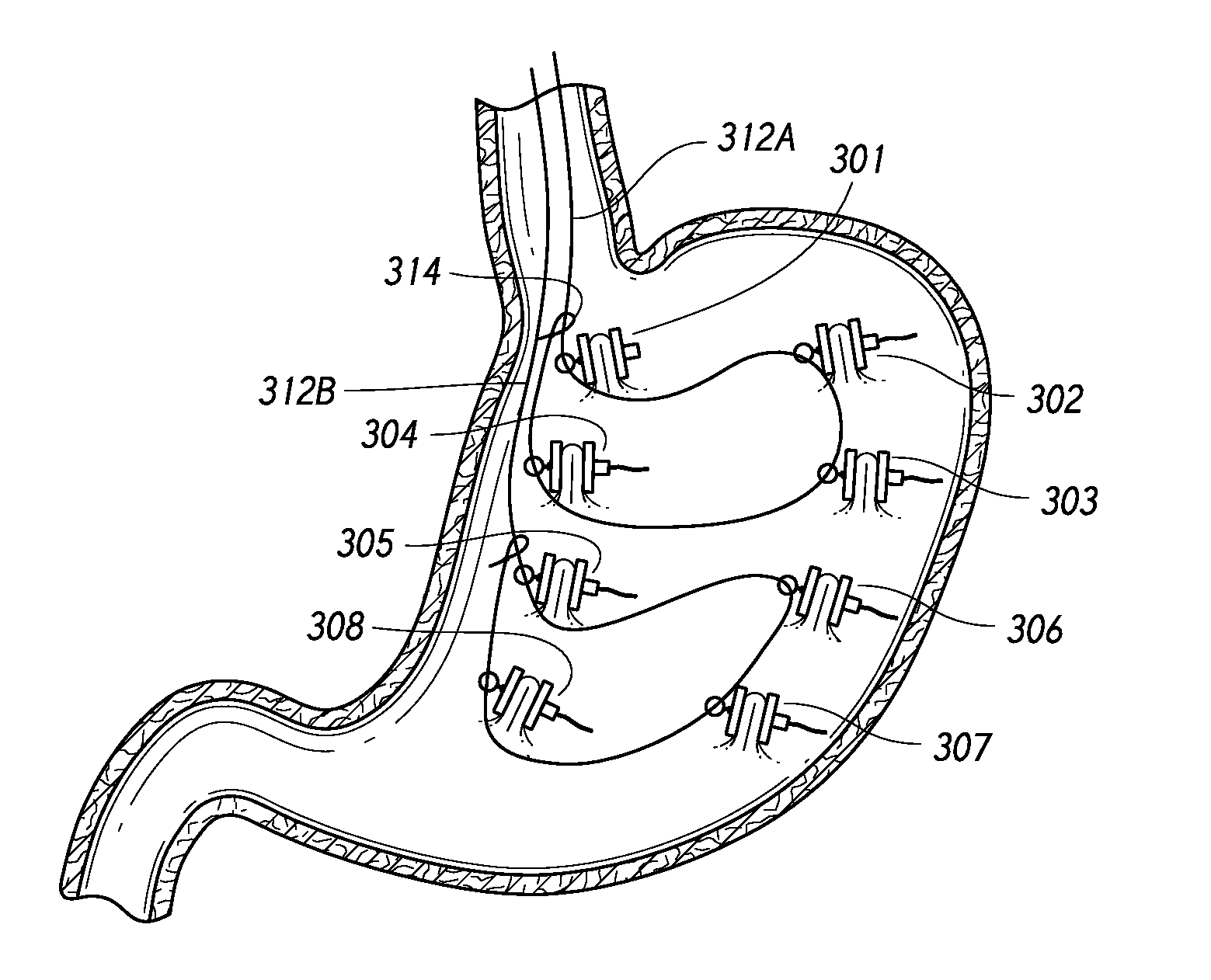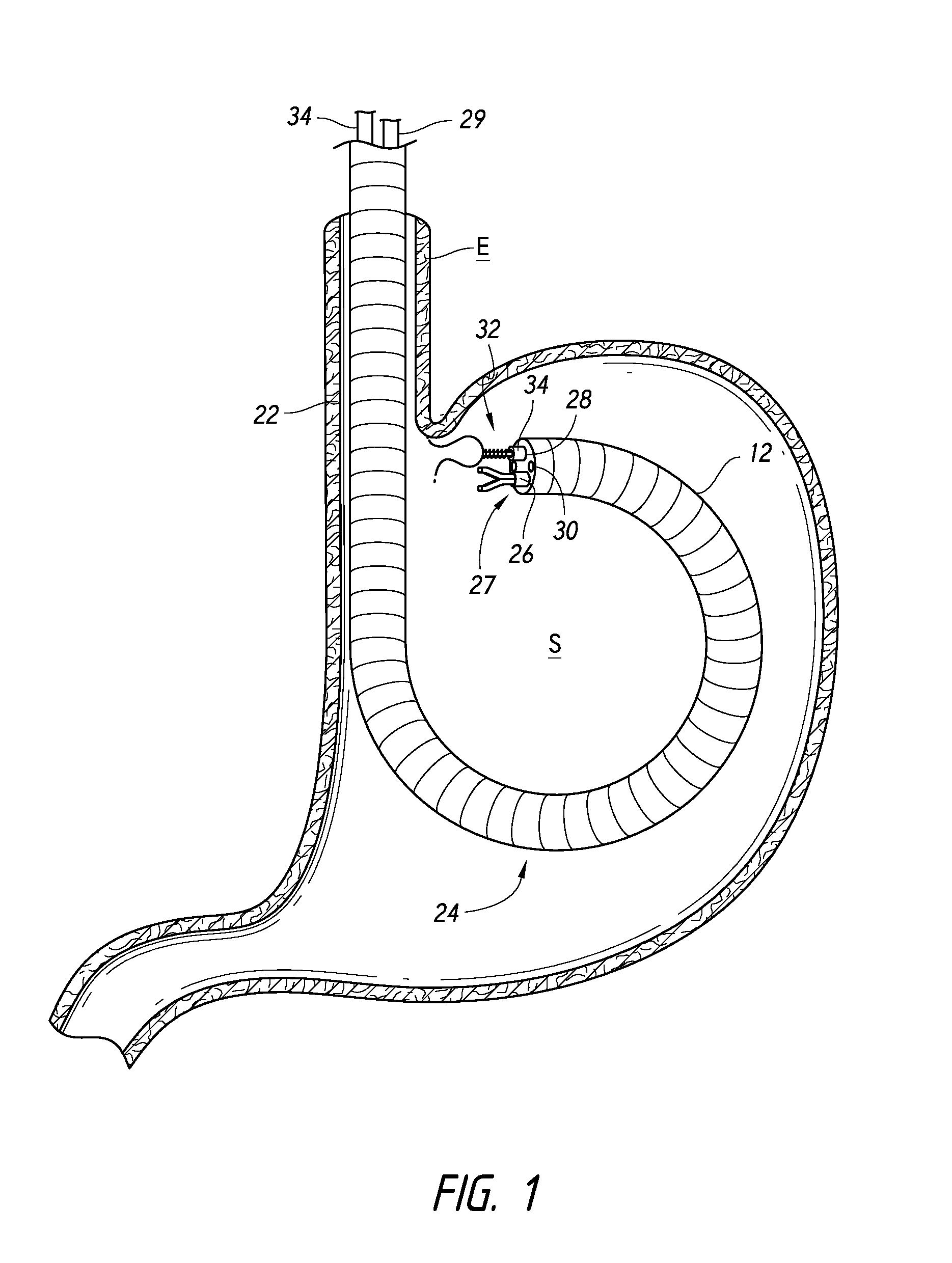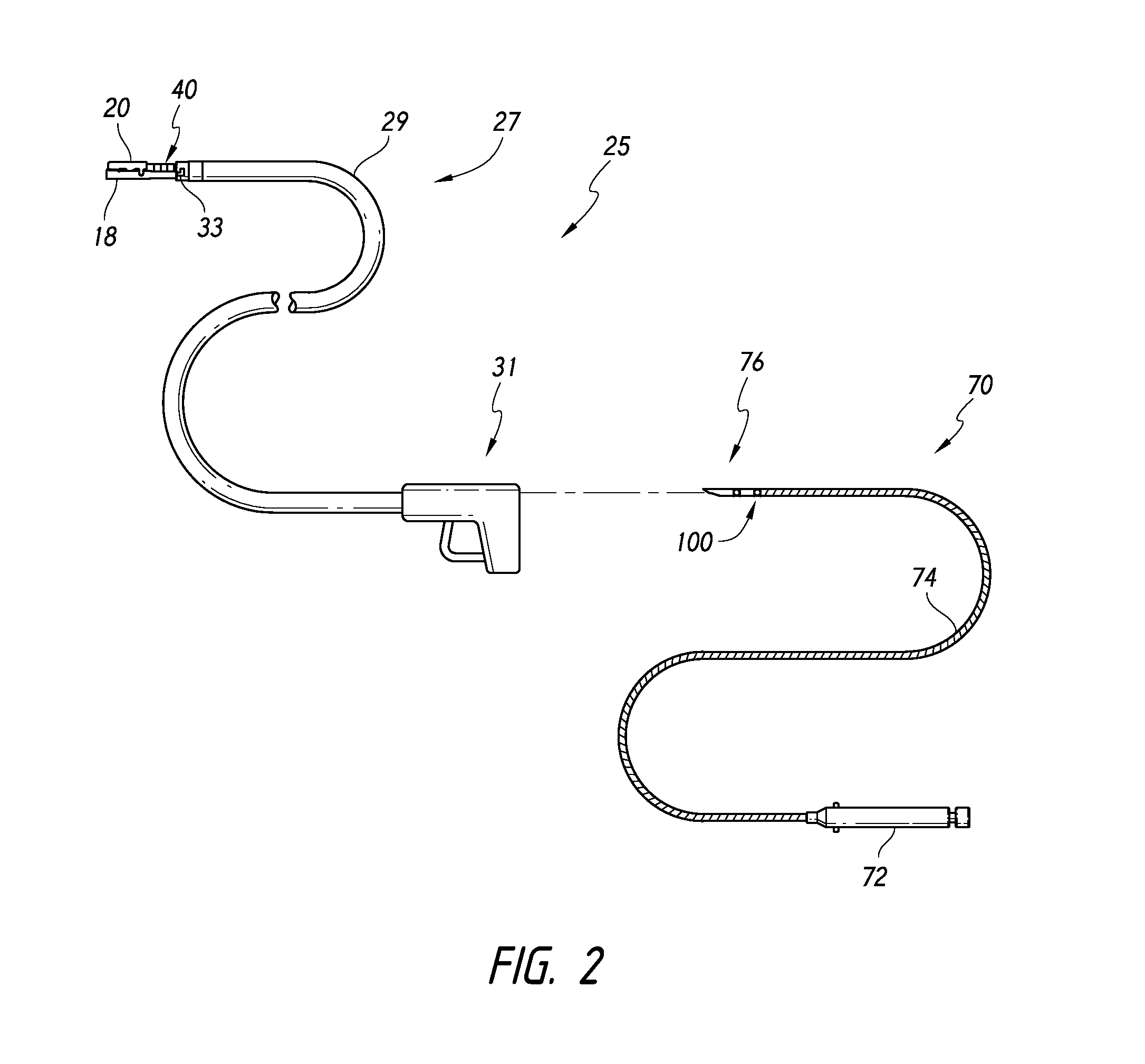Devices and methods for the endolumenal treatment of obesity
a technology of endolumenal treatment and obesity, applied in the field of endolumenal treatment of obesity, can solve the problems of weight loss, obesity is a serious healthcare problem, and the need for improved methods and devices, so as to reduce the volume of the stomach
- Summary
- Abstract
- Description
- Claims
- Application Information
AI Technical Summary
Benefits of technology
Problems solved by technology
Method used
Image
Examples
Embodiment Construction
[0031]The methods and devices described here are especially useful for stomach reduction and / or alteration surgery, for the treatment of obesity. However, these methods and devices may also be used for other surgical procedures, and to treat other conditions as well.
[0032]As described in United States Patent Application Publication No. 2009 / 0255544, incorporated herein by reference, obesity may be treated by forming substantially permanent tissue folds or plications in stomach tissue. The stomach has unique characteristics affecting several aspects of stomach surgery. The stomach has four tissue layers. The mucosa layer is the inner tissue layer followed by connective tissue, the muscularis layer and the serosa layer. The muscularis and serosal layers are difficult to manipulate because they are only loosely adhered to the mucosal layer and resistant to surgical modification.
[0033]The mucosa and connective tissue layers typically do not heal together in a way that can sustain the te...
PUM
 Login to View More
Login to View More Abstract
Description
Claims
Application Information
 Login to View More
Login to View More - R&D
- Intellectual Property
- Life Sciences
- Materials
- Tech Scout
- Unparalleled Data Quality
- Higher Quality Content
- 60% Fewer Hallucinations
Browse by: Latest US Patents, China's latest patents, Technical Efficacy Thesaurus, Application Domain, Technology Topic, Popular Technical Reports.
© 2025 PatSnap. All rights reserved.Legal|Privacy policy|Modern Slavery Act Transparency Statement|Sitemap|About US| Contact US: help@patsnap.com



